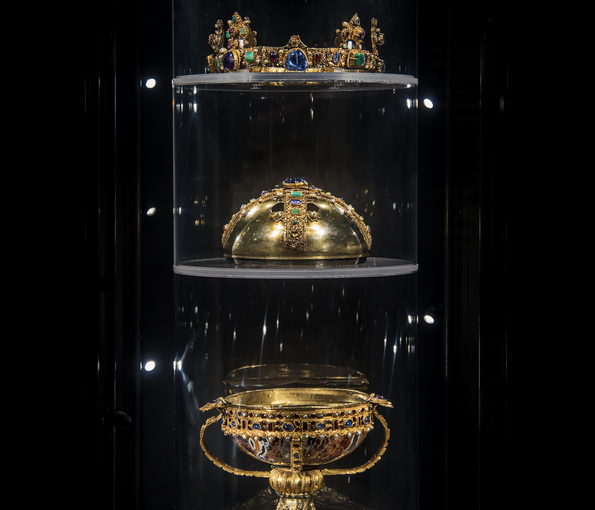Esther Shalev-Gerz
Esther Shalev-Gerz (born 1948 in Lithuania, living in Paris) is internationally recognised for her investigation of the construction of knowledge, history, and cultural identities. Her work develops through active dialogue, consultation, and negotiation with people whose participation provides an emphasis to their individual and collective memories, opinions, and experiences, which then become both represented and considered.
The Gold Room deals with the creation and understanding of cultural objects. Shalev-Gerz invited five historians to tell the story of an object they had each selected from the museum collection and five people that have recently found refuge in Sweden to tell the story of an object they had each brought with them on their long journey.
The Gold Room
– An Answer to Jorge Luis Borges’s Text ‘The Scandinavian Destiny’
Video, 40 min, 22 photographs, 50 x 60cm, 5 objects from the museum collection, 5 objects on loan, 2016
In The Gold Room, Esther Shalev-Gerz invites five historians to unfold potential stories of a specific object that they have selected from the museum collection, questioning the forms of discourse legitimised in the field of history. The other five participants are people who recently found refuge in Sweden. They had to make a very careful decision regarding what to take along on the long journey of their flight. They tell the stories of the one chosen object then unfold their personal story that is also the story of our times.
In the video, a floating gold leaf covers a square at the centre of the image. By using the Surrealists’ photographic technique of solarisation that brings to the surface both the negative and the positive of an image, the artist unifies the colours revealing new details and creating an atmosphere of passage. In ‘The Scandinavian Destiny,’ the Argentine author Jorge Luis Borges writes that historically the Nordic people travelled all over the world long before any other Europeans, each time leaving behind them rune stones with images and writing. Borges, whose grave in Geneva is shaped like a rune stone, was puzzled by the way Scandinavians created their destiny, as if they did not fully understand what they had discovered. He ends his text as follows:
‘In universal history, the wars and books of Scandinavia are as if they had never existed; everything remains isolated and without a trace, as if it had come to pass in a dream or in crystal balls where the clairvoyants gaze.’ This project proposes a reading of the importance of the cultural value of the objects that the Scandinavians chose to bring back to their countries, attesting to their curiosity and connection to different cultures that then became reminders of their journeys and encounters, as well as part of their tradition of highly sophisticated crafted objects. These cultural objects contain in their folds the stories of those personal encounters and adventures.

